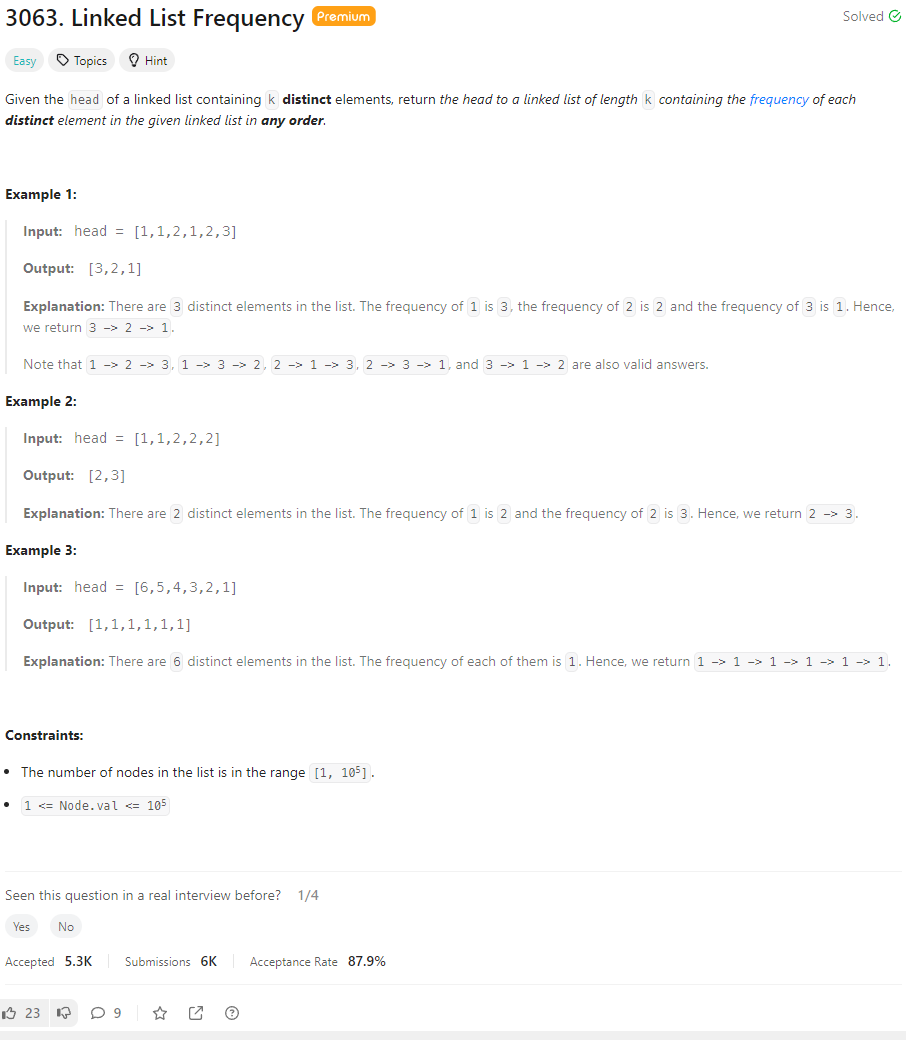Problem of The Day: Linked List Frequency
Problem Statement
Intuition
The problem involves counting the frequencies of elements in a linked list and creating a new linked list with these frequencies.
Approach
I approach the problem by using a dictionary (freq_map) to store the frequencies of each element in the linked list. I iterate through the linked list, updating the frequencies in the dictionary. Then, I create a new linked list by iterating through the values in the dictionary and appending nodes with the corresponding frequencies to the result.
Complexity
-
Time complexity: O(n), where n is the number of nodes in the linked list. The algorithm iterates through the list once to count the frequencies and once to create the new linked list.
-
Space complexity: O(m), where m is the number of unique elements in the linked list. The space required for the dictionary is proportional to the number of unique elements in the linked list.
Code
# Definition for singly-linked list.
# class ListNode:
# def __init__(self, val=0, next=None):
# self.val = val
# self.next = next
class Solution:
def frequenciesOfElements(self, head: Optional[ListNode]) -> Optional[ListNode]:
freq_map = defaultdict(int)
curr = head
while curr:
freq_map[curr.val] += 1
curr = curr.next
dummy = ListNode(-1)
curr = dummy
for v in freq_map.values():
curr.next = ListNode(v)
curr = curr.next
return dummy.next
Editorial Solution
Approach 2: Hash Table
class Solution:
def frequenciesOfElements(self, head: Optional[ListNode]) -> Optional[ListNode]:
frequencies = {}
current = head
freq_head = None
# Process the linked list, storing
# frequency ListNodes in the hashtable
while current is not None:
# Existing element, increment frequency
if current.val in frequencies:
frequency_node = frequencies[current.val]
frequency_node.val += 1
# New element, create hashtable entry with frequency node
else:
new_frequency_node = ListNode(1, freq_head)
frequencies[current.val] = new_frequency_node
freq_head = new_frequency_node
current = current.next
return freq_head
